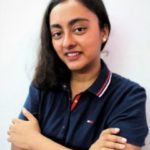From the Counter to the Heart: Creative Recipes of 3 QSR Brands Acing Customer Engagement
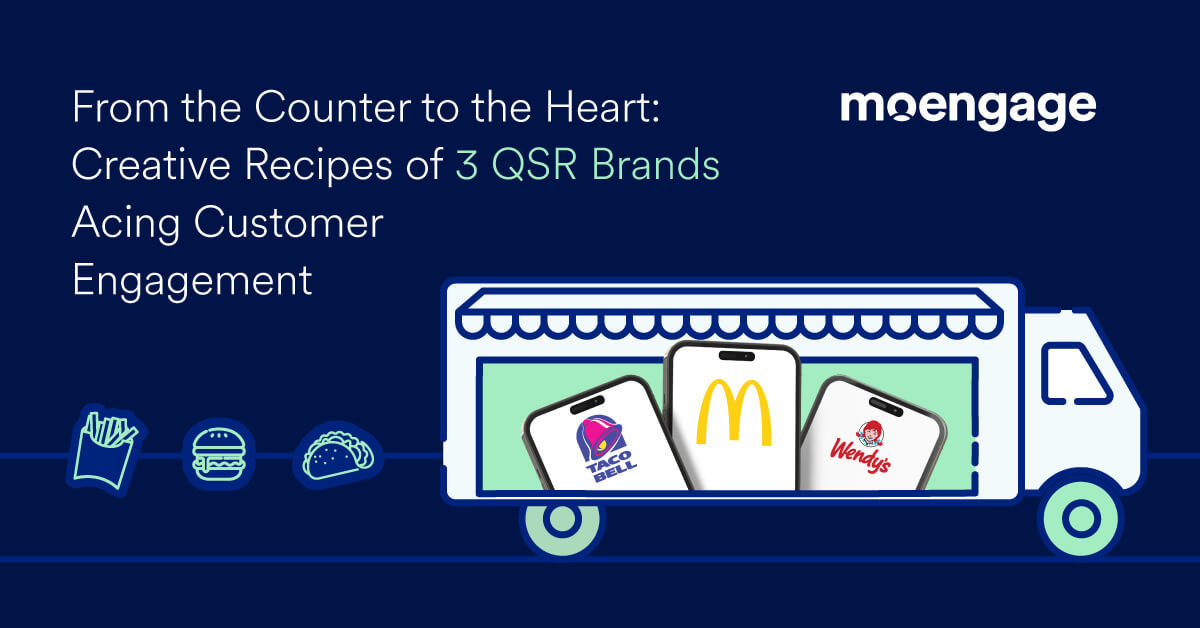
Reading Time: 6 minutes
Who doesn’t love indulging in a juicy burger, some crispy fries, and a chilled beverage to go along?
Quick-service restaurants (QSRs) are the perfect destination to satisfy cravings while on the go or from the comfort of our homes. Hence, it won’t come as a surprise that the QSR industry in North America has witnessed a significant transformation in recent years, and is predicted to reach a valuation of US$ 454.3 billion by 2030.
This also means that customer expectations are higher than ever. Not only do they want convenience and variety but also a seamless and engaging experience at every touchpoint in their buying journey. So it’s critical for QSR brands to ace their customer engagement strategy to maintain an edge over competitors.
Let’s deep dive into three leading examples of brands that understand their customers’ pulse and are nailing their customer engagement.
QSR Brands Excelling at Customer Engagement
1. Taco Bell 🌮
Amongst the numerous campaigns run by Taco Bell, one of the most popular ones is around National Taco Day. So much so that National Taco Day has now become synonymous with Taco Bell, and its creative customer activation activities have resulted in digital sales attaining more than 20% share of the company’s mix.
In 2021, Taco Bell launched its server on Discord, a chat platform with 150 million monthly active users, to crown a “taco champion” through a Taco Trivia event. It also raided other Discord channels tapped by competitor brands like Jack in the Box, Hot Topic, and Chipotle by giving away free tacos. Apart from this, it placed easter eggs on Reddit and across other social channels.
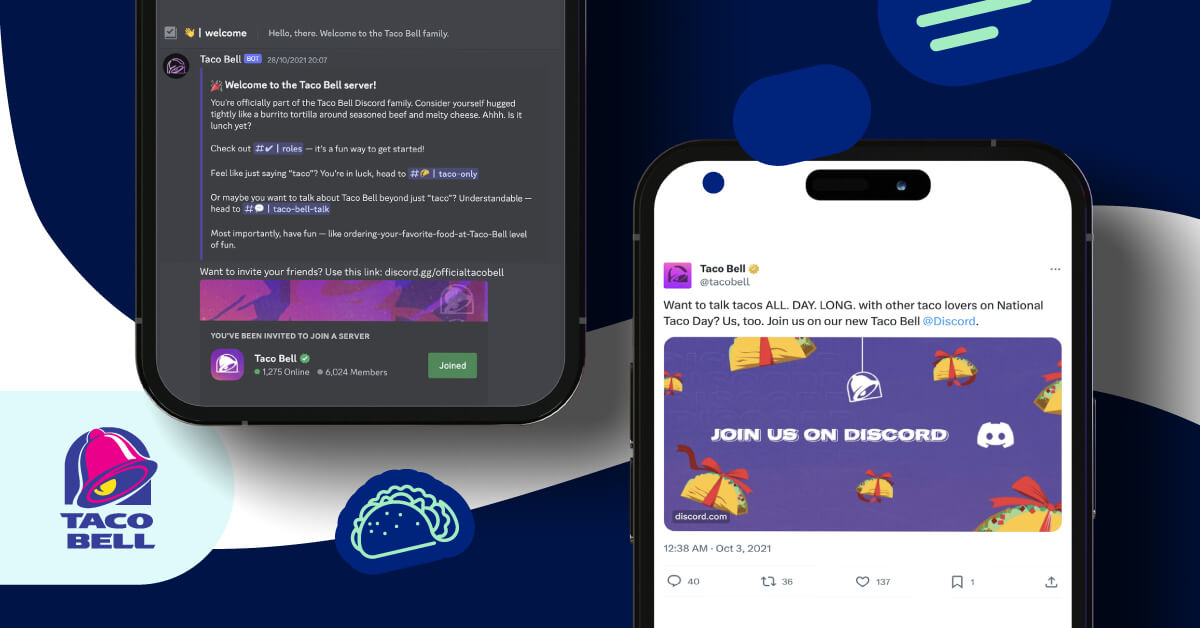
To date, Taco Bell’s Discord channel is active for fans to connect with others with similar taste buds and ‘taco ’bout anything Taco Bell’. Taco Bell also uses the channel to host giveaways and fun contests, and gather customer feedback.
Similarly, on National Taco Day this year, Taco Bell launched its fan-favorite “Taco Lover’s Pass” on the Taco Bell app at a discounted price. This offer was exclusive to “Rewards Members” and allowed them to redeem a taco daily for 30 days.
To raise more hype around this, Taco Bell gave 100 Rewards Members the chance to snag free passes via the Tuesday Drops landing page in the app. The code to get the free pass was sprinkled across Taco Bell’s social channels. The entire campaign was promoted across Taco Bell’s channels and communities, such as email, social media, SMS, and Discord. Furthermore, Taco Bell used this momentum to launch its all-new Toasted Breakfast Tacos menu.
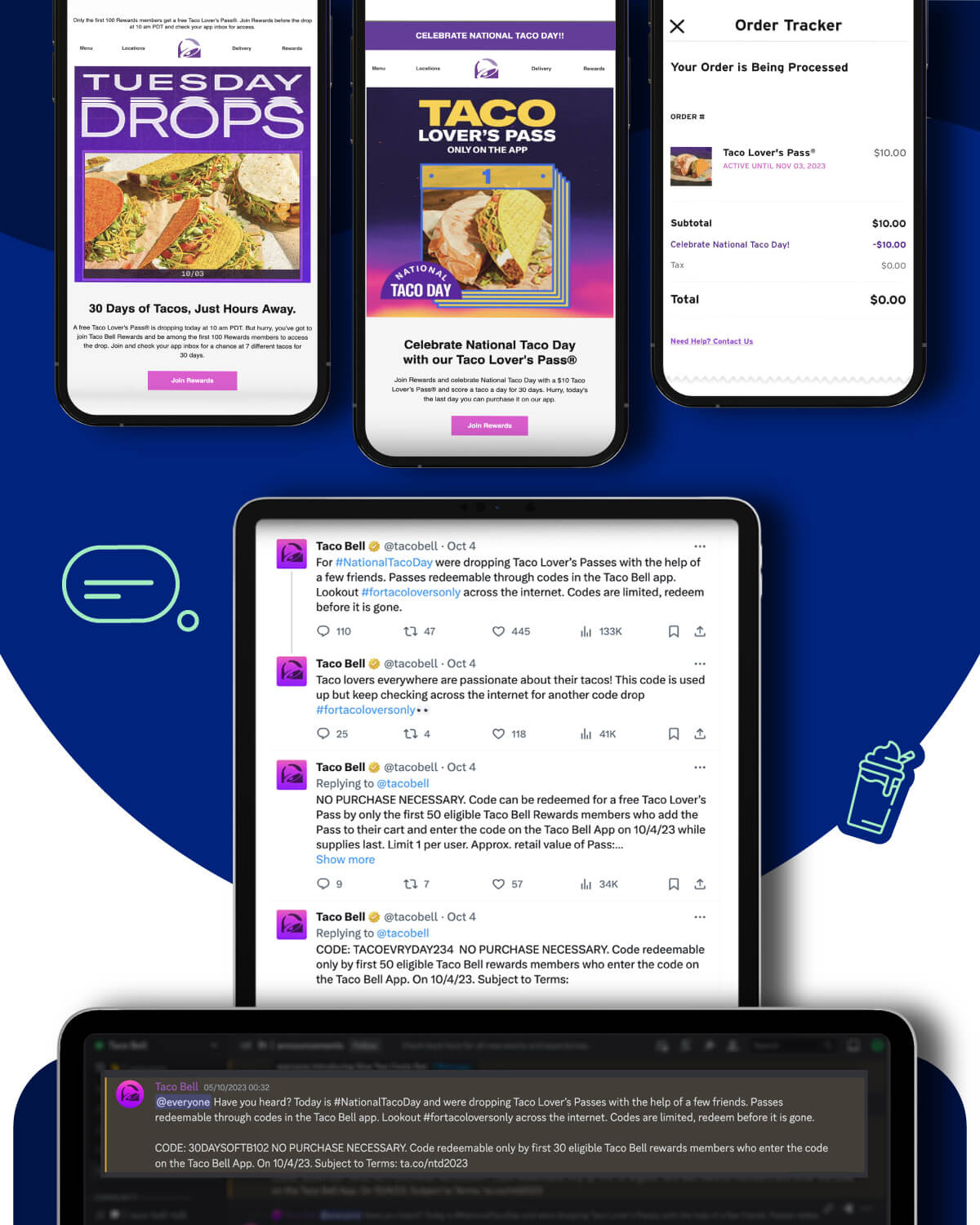
While the results of this year’s campaign are yet to be released, when Taco Bell launched the Taco Lover’s Pass in 2022, it resulted in 20% new Rewards members. It also generated a 16% renewal rate for customers opting into a second month.
| 🎯 Takeaway: Having a loyalty program for your QSR brand is essential, but what’s even more important is making it enticing enough for consumers to join. You can do this by launching attractive deals for loyalty members, consistently engaging members such as via campaigns around key festivals and other occasions that are relevant to your brand, and focusing on community-building. |
2. Wendy’s 🍔
Wendy’s has a history of innovative customer engagement campaigns and is famous for always going ‘all out’ with its marketing strategy.
One of their annual campaigns is for NCAA March Madness, for which it is the sponsor and “official breakfast and hamburger”.
For the 2022 March Madness campaign, Wendy’s rolled out a special menu, limited-time offers on select items (such as their Dave’s Single for a buck), and ads starring NBA legend Reggie Miller. The ‘slam-dunk’ deals were app-exclusive and designed to boost app downloads and customer engagement. They were promoted on Wendy’s website, social media handles, push notifications, email, etc.
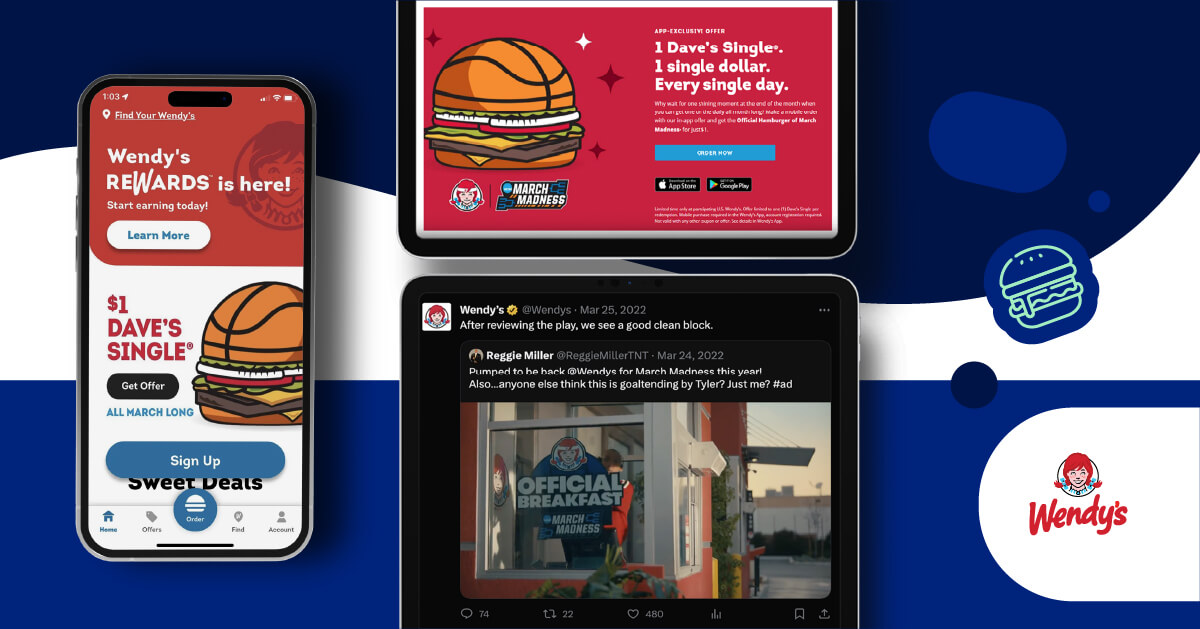
Apart from this, Wendy’s unveiled ‘Wendyverse,’ a branded virtual reality experience located on Meta’s Horizon Worlds platform. This was a continuation of Wendy’s unique approach to social media, gaming, and engagement inspired by Wendy’s products and outlets.
Wendyverse was promoted across all of Wendy’s channels, such as social media, website, app, email, and SMS. This helped to stir the excitement of fans around the tournament and increased in-store purchases, delivery orders, and in-app sales.
Overall, the launch of Wendyverse was a huge success:
- 52 million users reached between March 13 – April 30 through Meta ads
- 650 million+ social media impressions generated
- #1 in daily active users across all of Horizon Worlds
- Visited by over 10,000 fans within the first 7 days
- 16% of return users within the first 7 days
- 112% lift in site visits
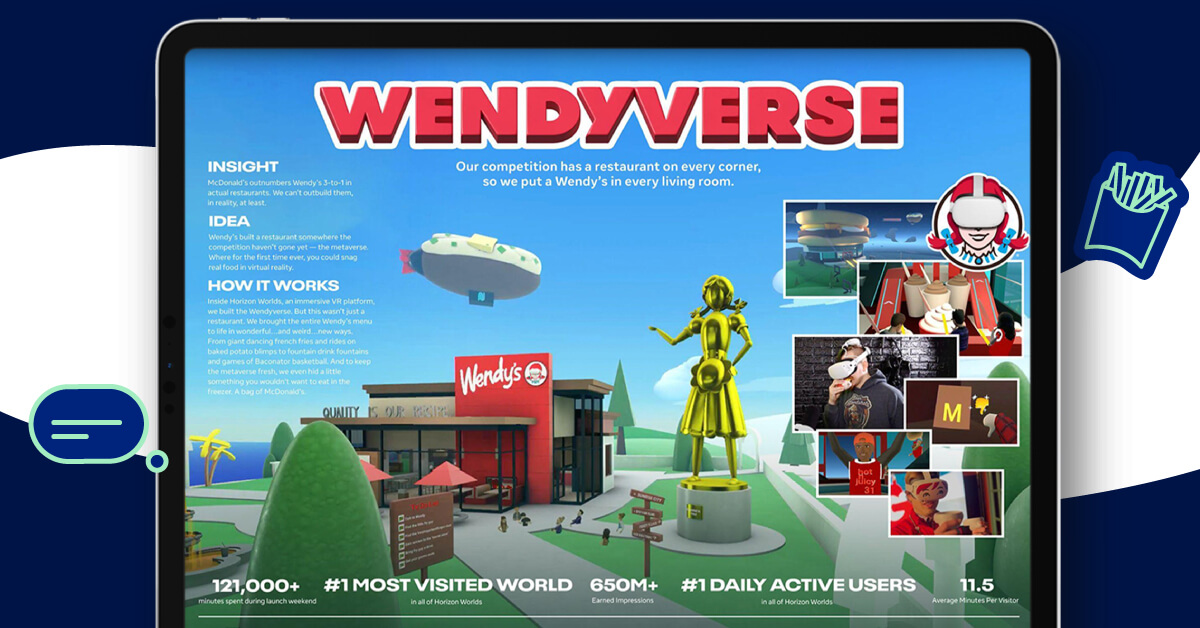
| 🎯 Takeaway: When you plan your customer engagement campaigns, follow an omnichannel strategy that syncs your communication across multiple channels to ensure consistency in the messaging. This involves delivering the right content to the right customers at the right time and across all touchpoints. |
3. McDonald’s 🍟
McDonald’s, the world’s largest fast-food chain, has pioneered customer engagement. They have invested significantly in digital innovations that cater to their customer’s evolving needs and preferences, resulting in enhanced customer experiences and increased brand loyalty. According to QSR Magazine, McDonald’s was the most downloaded food and drink app in 2022 worldwide (127M) and in the US (40M).
Here are some of the key services and benefits McDonald’s provides on its app and website that have contributed to its success:
- Attractive welcome offers and freebies
- McDonald’s loyalty program ‘MyMcDonald’s Rewards’ that customers can enroll themselves in. The points collected can be redeemed for offers based on items available in different point tier groups.
- Option to pre-order via the app to save time for curbside or front counter pickups and dine-ins.
- Exclusive deals on McDonald’s favorites in the app, such as Free Fries Friday.
- Contactless mobile order and pay option.
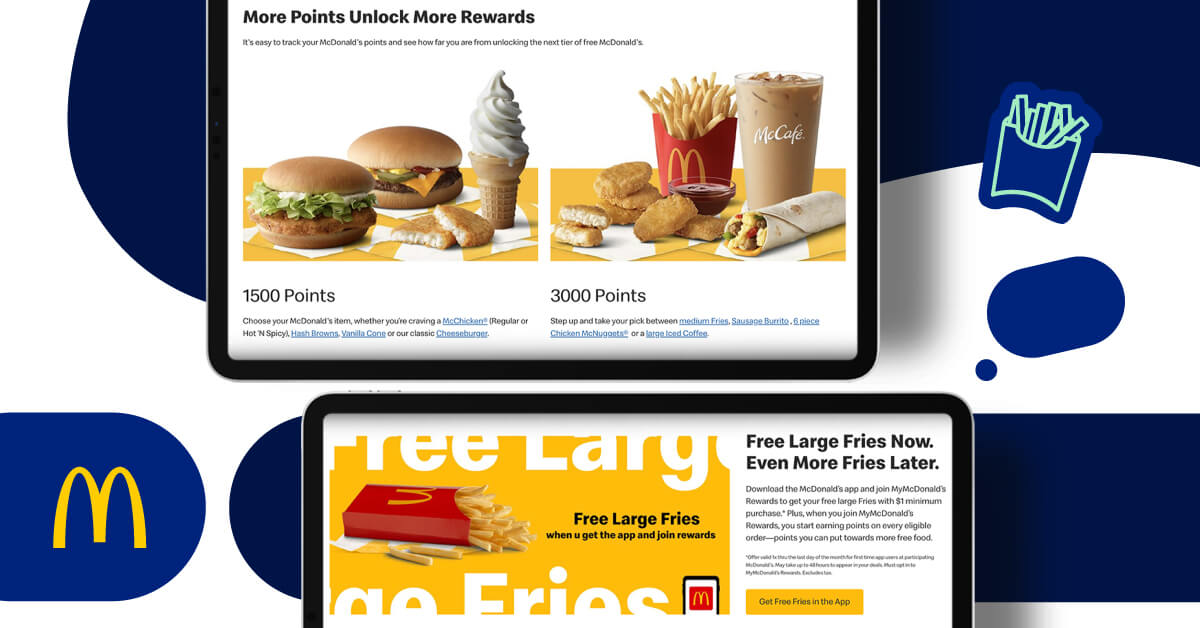
Apart from this, McDonald’s regularly launches various interactive campaigns. One of their most famous campaigns was the “Trick. Treat. Win.”
After noticing a pattern of decreasing restaurant visits during October, McDonald’s introduced a month-long program to tempt customers back during the post-summer and pre-holiday hustle and bustle.
Customers had to peel game pieces from the packaging of selected McDonald’s products or use the app to collect tokens and enter any of the 27 daily sweepstakes. This would give them one in a four chance of winning their choice of prizes instantly.
Trick. Treat. Win! from tms on Vimeo.
The campaign was promoted across all McDonald’s stores in the US, on television, social media, email, SMS, and even on the product packaging. Through the campaign McDonald’s was able to reach over 10 million consumers, and the popularity of its app skyrocketed.
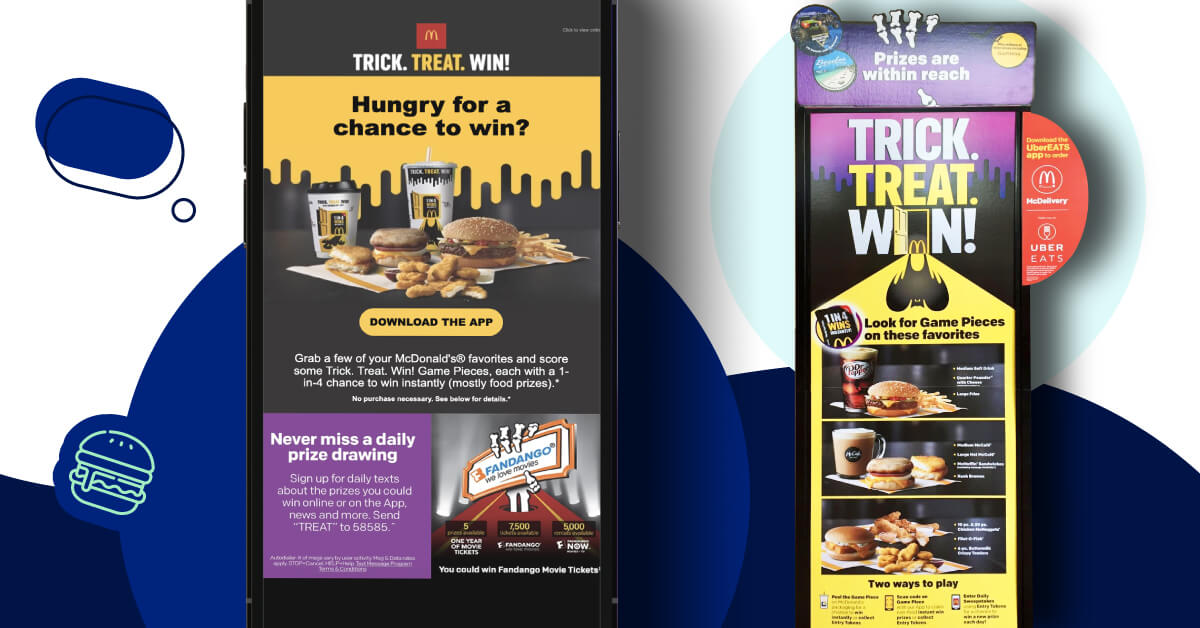
Here are the results:
- 1.3 billion sweepstakes entries
- 4.1 million app downloads
- 31 million site visits,
- 6.5 million registrations,
- 93% higher customer engagement
| 🎯 Takeaway: Using gamification can be a great way to provide a fun and interactive experience to your audience. It can encourage them to spend more time on your app/website, set your brand apart from competitors, and leave a memorable experience. It is one of the best ways to drive engagement and conversions, and bridge the gap between your online and offline offerings. |
In a Nutshell
The above campaigns are excellent examples of how QSR brands can successfully execute creative customer engagement campaigns and bridge their online + offline offerings to provide the best of both worlds to their customers. While innovation is a core element, delivering a natural and satisfying experience is equally important. This requires a deep understanding of customer needs and preferences, and leveraging emerging technologies that help to enhance the customer experience. QSR brands that put their customer at the center of their business model will create loyal and enthusiastic customers who eventually become brand advocates.













